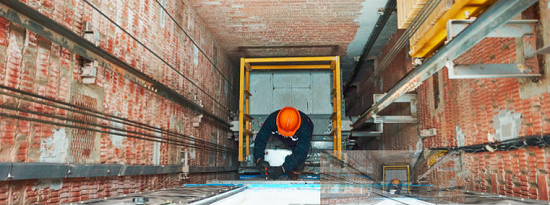| [打印] |

The list of regulations boards must comply with keeps growing. First it was gas line inspections, now it's elevators. By January 1, 2020, door-lock monitors will have to be installed on certain elevators; by January 1, 2027, emergency brakes will have to be installed on other types of elevators. When setting out to comply with these regs, boards will first need to determine which type of elevators they have. Then they’ll need to know enough about those elevators to make a key choice: repair or replace?
There are two types of elevators: a manual model, in which a building employee operates a handle on a device called a control switch; and an automatic model, with pushbuttons. The next important difference is traction vs. hydraulic. Traction elevators rise and descend using a cable attached to the cab on one end and to a counterweight on the other, and this threads around a big wheel attached to an engine. Hydraulic elevators are mounted on a piston (called a jack) that pushes the cab up when fluid is injected and eases it down when fluid is released. These elevators are usually found in low-rise buildings. They typically cost less and are easier to maintain than a traction model, but they can’t go higher than six or seven stories.
If an elevator was installed or overhauled within roughly the last decade, it may already be in compliance. Depending on the type of elevator the building has, the board may need to fulfill only one of the two new requirements. But older traction elevators might be required to comply with both.
The first of the new regulations requires “door-lock monitoring,” which must be installed by January 1, 2020. The second requires that a secondary emergency brake be in place by January 1, 2027. A door-lock monitor is an electronic device that prevents an elevator from moving if the doors are not closed properly. (Note: manual elevators are exempt from the door-lock monitoring regulation, and hydraulic elevators are exempt from the new brake regulation.)
The Department of Buildings (DOB) wants every automatic elevator to have a means of monitoring the operations of the hallway door, says Joe Caracappa, vice president and a partner at Sierra Consulting Group, an elevator consultancy. In fact, he notes, it may already be part of the elevator. “Elevators installed since the 2009 [building] code most likely have this type of system in place,” he says. “It already might be in the elevator control system but just not activated, or it may just need some software or some type of hardware. Most of those elevators are not a major expense to upgrade – something in the range of five to six thousand dollars worth of work.”
Part of that expense involves dealing with DOB requirements. Even if the component is already in place, the elevator servicing company has to file a permit. “Then they have to get a set of electrical prints showing the DOB that it exists electrically within the control-board circuit, then have that stamped by a professional engineer,” says Edward Voll of Vertical Systems Analysis, another elevator consultancy. “And then the DOB comes out and tests the elevator.”
Elevators – generally older ones – without such a door-monitoring system are a more expensive proposition, since new equipment must be integrated with the existing elevator control system. That’s still relatively simple if the schematics are available. But sometimes, previous upgrades haven’t been noted, and if the schematics aren’t available, options are limited. The board can try to get data from the elevator manufacturer, if it still exists, or hire a company to design how to wire the upgrade into the control system.
With the first of the two deadlines looming, now is the time for boards to start investigating what they’ll need to do to comply with these new regulations.
